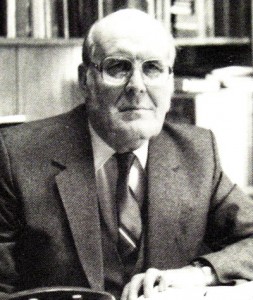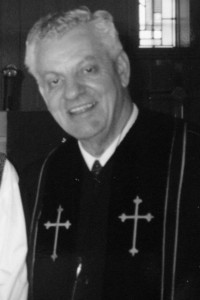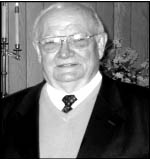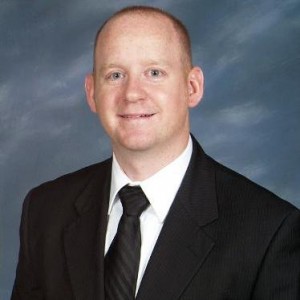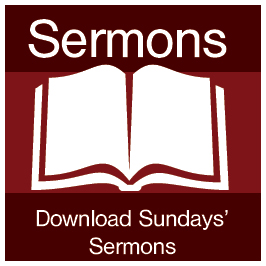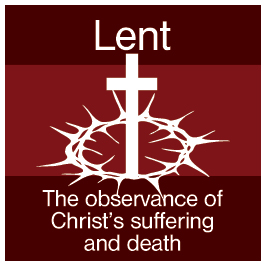 The Season of Lent – At the time of the Reformation, meditation on the passion of our Lord assumed an even greater prominence than it had before. This was in reaction to the work righteousness that had developed in the middle ages. Lutherans deemphasize what WE do in Lent, and emphasize what CHRIST did for US. Lent is a time for spiritual renewal and a return to our baptism, where we were buried with Christ in death to sin, and by grace, to be raised to a new life in him.
The Season of Lent – At the time of the Reformation, meditation on the passion of our Lord assumed an even greater prominence than it had before. This was in reaction to the work righteousness that had developed in the middle ages. Lutherans deemphasize what WE do in Lent, and emphasize what CHRIST did for US. Lent is a time for spiritual renewal and a return to our baptism, where we were buried with Christ in death to sin, and by grace, to be raised to a new life in him.
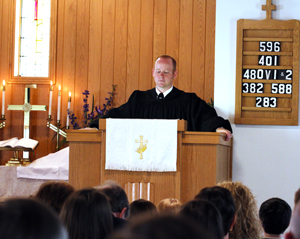
As believers in Christ—or Christians, Jesus Christ is the center of everything we do. This is no more evident than when we come together for worship. Out of love and thanks for the forgiveness of sins and eternal life that Christ has won for us we regularly gather together to praise and worship our one and only Savior.
Some parts of our worship remain the same each Sunday. This is so that we proclaim Christ and him crucified each and every Sunday. Other parts of our worship service change each week. These changes are based on the portion of the church year and calendar we are in. This church calendar covers all the most important events of Christ’s life and work.
There are two important aspects to our worship services at Holy Cross: God speaks to us through his Word forgiving our sins through the gospel in Word and Sacrament, and we speak to God in thankfulness with hymns of praise and thanks and in our prayers.
Church Year Related
We observe the great events of salvation as historically represented in the Christian Church Year. There are two parts of the church year. The first part, the Festival half—from Advent to Ascension, focuses on the life of Christ and he has done to save us. The second part, the non-festival half—from Pentecost to End Times, focuses on the Churches response to everything Christ has done for us. The Church year can be broken down into the following seasons:
- Advent – preparations for the coming of the Lord Jesus to our world
- Christmas – the birth of the Savior, God’s gift to the world
- Epiphany – the revealing of Jesus as the Son of God and Savior of all people
- Lent – the observance of Christ’s suffering and death in order to win our salvation
- Easter – the celebrating of Jesus’ victory over death and the grave
- Ascension – the celebration of Jesus’ return to the glory of heaven, to prepare a place for us and to rule over all the world in the interest of his church
- Pentecost – the celebration of the coming of the Holy Spirit to the church
- Trinity Sunday – the observance of this central teaching of Scripture, that there in only one true God who reveals himself in three persons: the Father, the Son, and the Holy Spirit
- Thanksgiving – the celebration of thanks to God for all of his blessings, both physical and spiritual
- Reformation Sunday – The first Sunday in End Times. It is the celebration of God’s grace in restoring the truth of the Bible to his church after centuries of darkness, and a challenge to us today to contend for the faith.
- End Times – This is a new addition to the Church year. On the final four Sundays of the Church year we focus Christ’s return to take all believers to live with him in heaven forever.
Liturgical
We are a liturgical church, meaning that we follow the historic forms of worship, as developed throughout the history of the Christian Church. The strength of this type of worship is that in each service the believer is led into the presence of God. There we hear of our greatest problem, sin, and God’s solution to that problem, the gift of a Savior. We are then led to praise God for his indescribable Gift. A typical worship service includes:
- Invocation – Every service begins “in the name of the Father and of the Son and of the Holy Spirit.” These are the same words spoken at your baptism. They are a reminder that we enter God’s presence to worship him because we were made his children through baptism.
- Confession and Absolution – In every service we humbly confess our sins to God, asking for his forgiveness, and then gladly hear his proclamation that each and every one of them has been forgiven. It’s included in every service because we can never hear those amazing, comforting words too often.
- Song of Praise – In response to the forgiveness given so freely to us, we join our voices in a song of praise to God.
- Prayer of the Day – We pray the appointed prayer for that Sunday of the church year. The prayer fits with the theme for the day.
- First Lesson – The first lesson is usually taken from the Old Testament. Many times we will hear about a prophecy that was fulfilled by Christ in the Gospel lesson for the day.
- Psalm of the Day – For 3,000 years believers have worshiped God by singing and reciting psalms.
- Second Lesson – The second lesson is usually taken from the Epistles—the part of the New Testament after the Gospels of Matthew, Mark, Luke, and John. Typically they apply God’s Word specifically to the believer’s life.
- Verse of the Day – A short song of praise to God, based on the theme of the day that thanks God for and prepares us to hear the Gospel lesson.
- The Gospel – The entire service revolves around the Gospel lesson. We stand to hear the words of Christ our King, just like people stood in the presence of royalty in ancient times.
- Sermon – The pastor preaches a message based on one of the lessons or the gospel for the day. The sermon teaches how God’s word applies to our Christian life.
- Confession of Faith – After the sermon we proclaim what we believe—what the Christian Church has always believed. To do that we use the words of the Nicene and Apostles’ Creeds—both of which have been used in the Christian Church for almost two millennia.
- Prayer of the Church – We join to pray to God about specific joys and troubles in our church and in the Church around the world. This is followed by the Lord’s Prayer.
- Lord’s Supper – The Lord’s Supper is offered on the first Sunday of the month. We, united with our brothers and sisters in the faith, approach God’s altar to receive the body and blood of Christ for the forgiveness of our sins and the strengthening of our faith.
- Song of Thanks – We give thanks to God, having tasted his forgiveness.
- Benediction – We then receive the same blessing that God gave to the ancient Israelites.
Interspersed throughout the service are hymns (normally four in number) plus choir selections or songs by our children.
Life Changing Worship
Our worship is life-changing. Not because we are so clever, eloquent, or innovative in worship, but because God is at work here through his Word.
God’s Word, the Bible, has the power to change lives. Therefore wherever that Word is preached, there the Holy Spirit is at work to bring people to faith, strengthen them in the faith, and lead them to a life of commitment to the Savior. “Faith comes from heaving the message, and the message is heard through the word of Christ,” Romans 10:17.
“The Word of God is living and active. Sharper than any double-edged sword, it penetrates even to dividing soul and spirit, joints and marrow; it judges the thoughts and attitudes of the heart,”
Hebrews 4:12.
The emphasis on God’s Word throughout our services means that God’s power is here at work to change us from the inside out, to change our hearts and therefore our behavior as well.
The Pastors Vestment
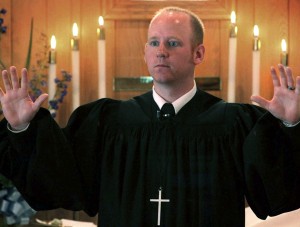 The robe, which is called a Luther Robe, is designed to cover the pastor’s body and clothing, taking the focus off of the pastor and reminding worshipers that he is a representative of God. The robe is black to symbolize the sin that entraps all of us. Lutherans have historically worn black to distinguish themselves from other church bodies. Many Lutheran Pastors have started wearing a white robe called an alb. The alb was the common garb of professionals in the Roman Empire at the time of the early church; by the fifth century it had become a specifically Christian vestment. The white of the alb symbolizes the righteousness of Christ by which alone he, a sinner himself, is able to carry out the daunting and humbling task of the ministry of the Word.
The robe, which is called a Luther Robe, is designed to cover the pastor’s body and clothing, taking the focus off of the pastor and reminding worshipers that he is a representative of God. The robe is black to symbolize the sin that entraps all of us. Lutherans have historically worn black to distinguish themselves from other church bodies. Many Lutheran Pastors have started wearing a white robe called an alb. The alb was the common garb of professionals in the Roman Empire at the time of the early church; by the fifth century it had become a specifically Christian vestment. The white of the alb symbolizes the righteousness of Christ by which alone he, a sinner himself, is able to carry out the daunting and humbling task of the ministry of the Word.
A pastor will often wear a colored cloth is called a stole. The stole is a historical symbol of the pastoral ministry. It is a reminder to the pastor and the congregation of the yoke of humble service that God has placed upon his shoulders.

